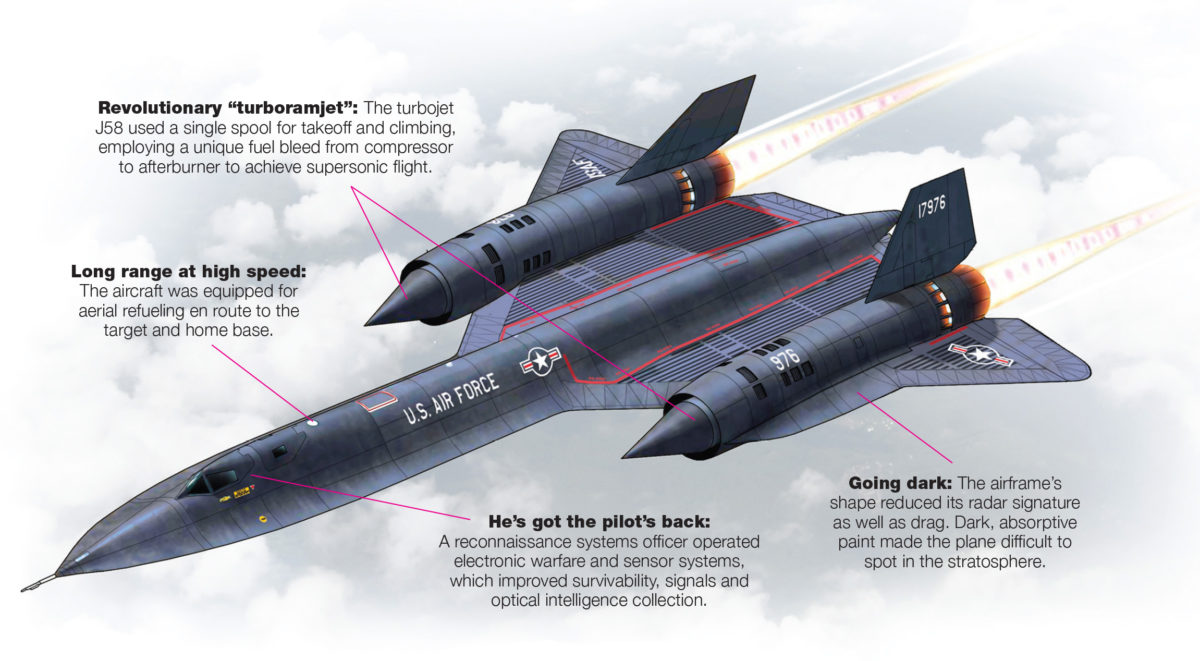On July 26, 1968, the North Vietnamese fired two SA-2 surface-to-air missiles at SR-71A No. 976. Neither crewman saw the SAMs detonate about 2 miles behind the supersonic “Blackbird,” whose crews called it “Habu,” after the deadly pit viper in Okinawa, Japan. No missile in the world came as close as the North Vietnamese SAM did to catching a Blackbird.
The Lockheed SR-71 and its A-12 predecessor derived from the CIA’s 1956 Rainbow Study initiated in recognition of the Lockheed U-2 spy plane’s vulnerability to Soviet SAMs. The study stated that a plane capable of surviving SAM systems must have a small radar cross-section, use radar-absorptive materials, operate above 80,000 feet and fly at supersonic speeds. Those requirements far exceeded the aviation and engine technology of the time.
On Aug. 20, 1959, the CIA selected a Lockheed design conceived by the company’s Advanced Development Department, aka the Skunk Works, headed by engineer Kelly Johnson. Virtually every aspect of the aircraft had to be developed from scratch. Problems with the Pratt and Whitney J-58 engines delayed the initial A-12 flight until Jan. 15, 1963.
The Air Force’s two-seat version, the SR-71, first flew on Dec. 22, 1964. It included a backseat reconnaissance systems officer to operate its electronic surveillance systems, electronic countermeasures equipment, better cameras and ground-mapping radar.
The SR-71 began to replace the CIA’s A-12s at Kadena Air Force Base on Okinawa in March 1968 and flew its first mission over North Vietnam on March 21. During the next seven years, Kadena-based SR-71s flew more than 200 missions over North Vietnam, Cambodia and Laos. Only two were lost, and that was because of mechanical failure. The Blackbirds provided the best imagery of the Son Tay prisoner of war camp, supported B-52 raids by jamming enemy radar and conducted sonic booms over the “Hanoi Hilton” POW camp to bolster morale and facilitate the prisoners’ intelligence activities.
The SR-71, with upgrades, served the Air Force from 1967 to 1998 and was its only warplane never to suffer a combat loss. Virtually everything about it was a first: the stealth features, computer-assisted avionics, inertial navigation system and engines. The Blackbird’s longevity and unequaled combat record marks it as the 20th century’s most advanced high-performance aircraft.
First published in Vietnam Magazine’s August 2016 issue.





